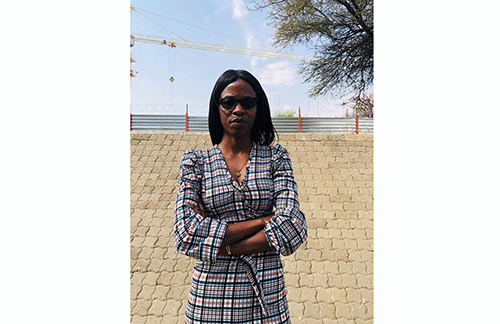Diana Mwanyangapo
“Creativity is just connecting things. When you ask creative people how they did something, they feel a little guilty because they did not do it; they just saw something. It seemed obvious to them after a while” – Steve Jobs.
Certainly, the late genius, Steve Jobs, had a point with regard to the critical role that creativity and arts play in our society, for where words fail, music speaks – and this is the language of life.
Definitely, Science, Technology, Engineering and Mathematics (STEM) need to be valorised because, as Namibia, we should aim at becoming an advanced, industrialised and developed economy – but surely, these are not enough to solve our problems.
In addition, to STEM, we must, as a necessity, add an A to STEM, so that we have STEAM, which is the steam to power our lives to real human development, prosperity and enhanced enjoyment.
This A in STEAM, which is for arts, must be added to the educational curricula and university programmes – and these include any mental engagement in creativity, music, literature, acting, dancing, public speaking and creative writing. With the inclusion of the arts in STEM and, thus, our lives, we can communicate ideas and thoughts as well as enjoy the fruits of STEM thereof. Arts and its sub-disciplines simply refer to forms of self-expression, therapy and the means to find beauty in life and enjoy it. Arts define beauty, and it makes this beauty a liveable, attainable and embraceable reality.
Just imagine a world without music: there would be no beautiful pictures of our colourful world and its inhabitants. Imagine, the breath-taking paintings, the tear-jerking movies on Netflix, DSTV – you name it. Or the sculptures that freeze life, and imagine it in awesomeness, which is beyond imagination, or grabbing a romantic novel that makes you live and relive moments experienced and not yet experienced. That is the beauty of the arts, and it is artists who create all these.
They breathe life into our existence, and they complement what the scientists, technologists, engineers and mathematicians bring to our world – and each one of them plays an integral and complementary role. If we have had a Ministry of Education, Arts and Culture in Namibia, then in essence, we should have arts education also taking prominence in the education sector at all levels.
Arts in education, sometimes referred to as arts learning, is an approach to teaching and learning that utilises creativity, imagination and artistic exploration to support student outcomes. This would entail such engagements inclusive of literature and poetry, storytelling, visual arts film, craft, design, digital arts, media and photography. These are all the aspects we need in life – either for entertainment or to create a colourful and peaceful world for ourselves. Art is beauty, and the arts make you feel, think and create.
Certainly, as Namibian citizens, our youth need entertainment, creativity and a life of worth. Through arts education, we can create a healthy and joyful environment.
We have talent that is amongst us, yet this is not provided with enough motivation, funding and promotion. The world over, we, musicians, painters, actors, entertainers – you name it – who are millionaires, and they play a critical role in the socio-cultural and economic fabric of life.
Not talking of the recent scenes where we had in Namibia Burna Boy, Makhadzi, Koffi Olomide – and of course our own Gazza, King Tee Dee and Tate Buti – you name them. And one of my recent encounters this year was with the award-winning author – Valerie Tagwira, who is an enviable example of how STEAM can work. Whilst she is an author of note, she is also not only a medical doctor but a specialist obstetrician-gynaecologist by profession for that matter. This is a remarkable illustration that an approach to education can bring about amazing results, and I regard her a typical testimony of what STEAM can bring about. Could the Zimbabwean education system have had it right in shaping young minds in multiple arrays for them to explore? We certainly can take a leaf from our neighbour, perhaps?
Of course, we got it right in establishing wonderful institutions, such as the National Theatre of Namibia, the National Arts Council, the National Art Gallery, the College of the Arts – and course, how NUST, though being a science and technology university, also has degrees in arts, such as the Bachelors to Masters Degrees in English, Media and Communication. Could NUST possibly have taken a leaf from its partner institution – MIT – which, though being an avowed institution of technology, also offers arts education? This is simply impressive.
But are we considering the arts in our funding structures, scholarship considerations, training, programme development and support mechanisms?
Do the arts even have a tiny space in the NCRST, which by its name is already indicative of a bias against the arts? As a nation, we certainly need to think seriously about this. Instead of STEM, it is STEAM we should support, for the holistic education of the Namibian child. After all, it is we who have crafted the mantra – no one should be left behind.


